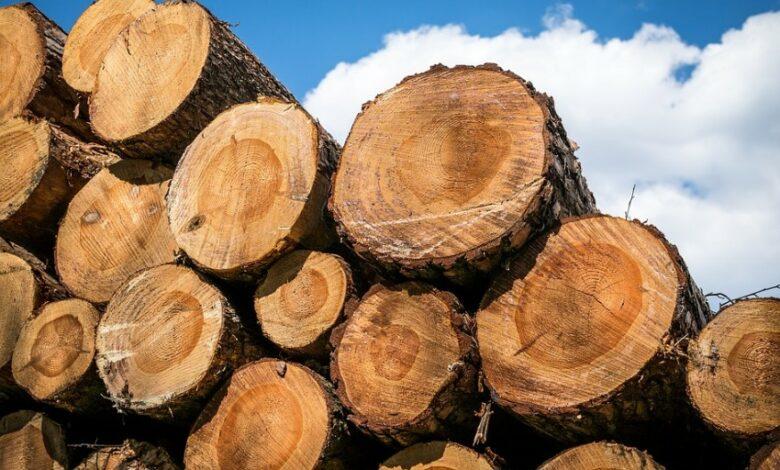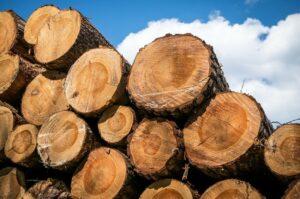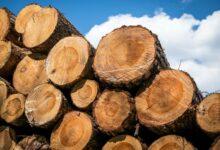
Top 15 Timber-Producing Countries in Europe
Timber-Producing Countries in Europe – Timber production is an important industry in many European countries. Forests cover over 40% of Europe’s land area, providing timber that is used for everything from construction to paper production. The type and amount of timber produced varies widely across the continent based on factors like climate, geography, policies, and more.
In this article, we will look at the top 15 European countries by timber production and explore key details about the forestry industry in each one. Understanding the largest timber producers in Europe provides insight into an industry that continues to play a vital economic and environmental role across the region.
👉 Relocate to Canada Today!
Live, Study and Work in Canada. No Payment is Required! Hurry Now click here to Apply >> Immigrate to Canada
Top 15 Timber-Producing Countries in Europe Are:
#1 – Sweden
With 28 million hectares of forest covering nearly 70% of its total land area, Sweden is Europe’s leading timber producer. Its highly mechanized forestry industry focuses primarily on coniferous trees like pine, spruce and fir. Over 80% of the timber is used domestically, helping make Sweden a net exporter of paper, sawn wood and other forest products. The country’s northern forests are characterized by slower tree growth compared to southern areas, resulting in higher quality wood. Sustainability is a major priority, with replanting rates that exceed harvesting rates. Key forestry areas are found along the Norrland coast and inland areas north of Stockholm. Information Guides In Nigeria
Read Also: Top 15 Timber-Producing Countries in the World
#2 – Finland
Finland places second among European timber producers with a forest industry that plays an integral economic role. The country’s robust timber output relies on carefully managed forests that cover 86% of its land area. Fast-growing spruce and pine species thrive across much of the territory. Finland’s advances in sustainable forestry techniques have helped expand forest resources despite substantial harvesting activities. The majority of timber is used for pulp and paper production, which accounts for 20% of Finnish exports. Other key forestry areas lie in the south-central and eastern parts of the country.JAMB Portal
#3 – Germany
Germany’s timber production ranks third in Europe, with forests covering about one-third of its total land area. Conifers like spruce, pine and fir make up the majority of tree species used for forestry purposes. While domestic timber demand is high, Germany still exports a substantial amount of forest products to neighboring European markets. The timber industry here has increasingly focused on environmental sustainability and conservation in recent decades. Important timber producing zones can be found throughout central and southern parts of Germany, as well as along the Baltic coast.NYSC Portal
#4 – France
France’s substantial timber industry is built on 28 million hectares of forest representing over 40% of its land area. Oak species account for a major portion of France’s timber production, alongside other broadleaf species and conifers. While commercial forestry plays a key role, regulations that protect natural ecosystems limit harvesting activities compared to some other European countries. Significant timber producing areas are concentrated in Aquitaine and central parts of France. The French timber sector produces sawn wood, panels, pulp, paper and other products, with over 60% consumed domestically.Timber-Producing Countries in Europe
Read Also: Top 15 Timber-Producing Countries in Asia
#5 – Austria
Despite its relatively small geographic size, Austria contains extensive forest resources that fuel a considerable domestic timber industry. Nearly half of its land area is covered in forest, including mountainous alpine areas. Softwood species like spruce, fir and pine account for the majority of tree species used for timber production. Austria’s forest management model focuses on maximizing sustainability and conservation efforts. Timber is also a major export product, mostly to neighboring European nations. Key timber production zones are located in the Alpine areas and northern regions of the country.
👉 Relocate to Canada Today!
Live, Study and Work in Canada. No Payment is Required! Hurry Now click here to Apply >> Immigrate to Canada#6 – Poland
Poland has a long tradition of timber harvesting, with forest industries playing an integral role in its economy. About 30% of its land area is forested. Pine and spruce species dominate the country’s timber production. Poland has made major efforts in recent decades to adopt sustainable practices and protect forest biodiversity. Timber exports help drive the industry, supplying wood products to buyers across Europe and beyond. Important timber areas are found throughout northeastern, central and southwestern Poland.
#7 – Italy
While not the largest producer, Italy still maintains an active domestic timber industry supplying wood products across the country and Europe. About one-third of Italy is forested, covering 10 million hectares of land. Evergreen oak, beech, fir and poplar species are frequently used for timber. Italy’s forest management model has emphasized sustainable harvesting practices and conservation since the 1990s. Key timber producing areas are found in the mountainous northern areas and along the central Apennine range extending down the boot of Italy.Timber-Producing Countries in Europe
Read Also: Top 15 Timber-Producing States in Nigeria
#8 – Czechia
The Czech timber industry has an extended tradition and remains important for the country’s economy today. Forests comprise over one-third of Czechia’s land area, with coniferous species like spruce, pine and fir making up a majority share of timber production. Conservation and forest expansion efforts have helped offset the impacts of continued harvesting. The country produces sawn wood, paper, wood panels and other products, with a mix of domestic consumption and exports. Primary forestry zones include Bohemia in the west and Moravia in the east.Good morning my love messages
#9 – Spain
Although not generally thought of as a timber giant, Spain maintains substantial forest resources that support its timber sector. About 36% of the country is forested, dominated by pine, eucalyptus and fir trees. Domestic demand drives most of Spain’s timber production. The industry mainly focuses on sawn timber, panels, pulp and paper. Sustainable harvesting practices have been increasingly implemented over the past decade. Important timber producing zones are located in the northern regions along the Bay of Biscay and the Galicia area in the northwest.
#10 – Romania
Romania’s timber industry relies on its extensive forest coverage, which makes up about 28% of the land area. Coniferous trees like fir, spruce and pine are predominant. Most timber production is concentrated in mountainous regions like the Carpathians. While domestic consumption is important, Romania exports significant amounts of timber to major European markets like Germany and Italy. Conservation efforts have created protected forest areas and national parks to combat deforestation.
Read Also: Top 15 Timber-Producing Countries in Africa
#11 – Norway
Norway’s timber resources are built around coniferous tree species well-suited to its northern climate. Despite accounting for just 5% of the land area, forests play an important economic role. The timber industry focuses primarily on pine and spruce logging. Paper and pulp production drive much of Norway’s timber sector. While not a top-tier producer compared to neighbors like Sweden and Finland, Norway remains an important supplier within the European timber market. Key forestry areas are found along the Scandinavian mountain range in the central parts of the country.Best Schools for Drama and Performing Arts in Nigeria
#12 – Bulgaria
Although relatively small in geographical size, Bulgaria contains significant timber resources covering over one-third of its land area. Bulgarian timber production relies largely on coniferous trees like pine, fir and spruce. The mountainous topography creates growth conditions ideal for these species. Logging activities increased substantially following the fall of communism in the 1990s. Today, Bulgaria’s timber sector generates wood products for domestic use and export, while implementing more sustainable practices. Major timber areas are located in the Rhodope, Rila and Pirin mountain ranges.200 Romantic Love messages
Read Also: Top 15 Nation with High-value Timber and Forestry Assets
#13 – Serbia
Serbia’s timber industry accounts for around 2% of GDP and utilizes the country’s extensive forest coverage, some of the largest in Europe. Coniferous spruce, fir and pine trees make up most of Serbia’s timber production. Forestry is focused in rural areas, contributing significantly to local economies. Both legal and illegal logging have posed challenges to conservation efforts in recent decades. But reforms have addressed these issues and prioritized more sustainable management. Important timber zones include Tara, Golija and Kopaonik national parks.Timber-Producing Countries in Europe
#14 – Slovakia
Slovakia’s timber industry makes an important contribution to the national economy, drawing from forest resources that cover over 40% of its territory. Production relies mainly on Norway spruce and Scots pine species concentrated in mountainous central and northern areas. Conservation laws protect biodiversity and regulate harvesting. Most timber is processed domestically. While exports are limited compared to leading producers, Slovakia still supplies timber products to other European markets. Strict oversight has improved sustainable forestry practices.15 Best Glow-Enhancing Moisturizers
Read Also: Top 15 Traditional Roofing Wood in Nigeria
#15 – Portugal
Rounding out the top 15 timber producers is Portugal, whose forests cover over one-third of its land area. While it lags behind European leaders, Portugal’s timber sector remains a significant domestic industry. Pine and eucalyptus species account for the majority of timber production. Wood pulp, paper and sawn timber are major export products, while fuelwood supports local biomass energy. Important timber areas are concentrated in northern and central Portugal. The country has committed to sustainable forestry management techniques like selective cutting.
Conclusion
In summary, timber production remains a vital economic activity across Europe. As this article showed, northern European countries like Sweden, Finland and Germany lead the continent in timber harvesting and processing. However, even southern and eastern European nations maintain valuable timber industries that supply domestic and international markets. Jamb Result
Protecting the future of Europe’s forests requires a balanced approach between commercial timber production and conservation efforts. Sustainable techniques like selective cutting, replanting and biodiversity protections can support the industry while also preserving invaluable forest ecosystems for generations to come. With proper management, Europe’s forests will continue providing timber resources as well as carbon sequestration, habitat protection and recreational opportunities.
Check JAMB Result
Check and Confirm: How much is Dollar to Naira







